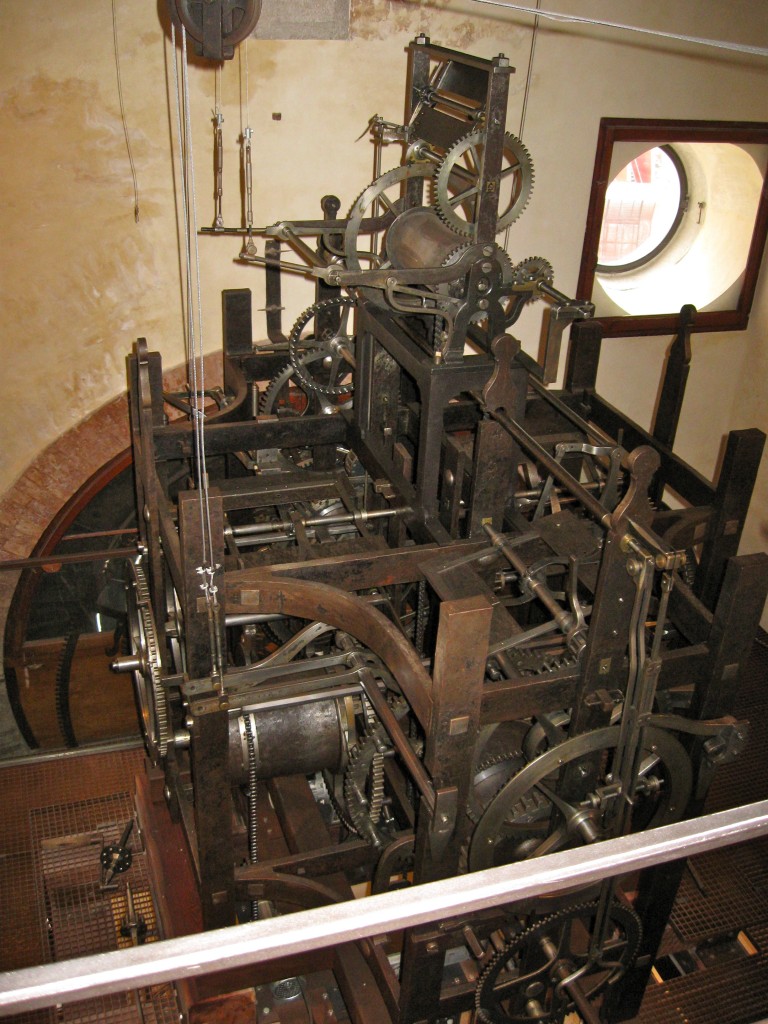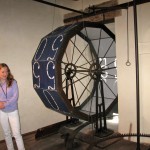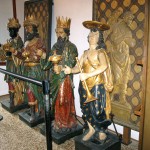Our second tour of the day was to see the St. Mark’s Clock Tower. The tour was almost over even before it began. With rain in the area, there was a good chance we would not get to see the fourth and fifth levels of the tower since they are outside and it would have been too dangerous if wet. However, we decided to go anyway and chance it with the weather.
The tour started in the living room of the clock-watcher’s apartment, which is also where the weights that power the main mechanism hang. While on this level, we learned that in order to build the clock tower, several buildings were demolished to make room. Built around 1496 and completed within 4 years, this clock tower was also home to each clock-watcher and his family until renovations began in 1998.
Next we proceeded to the second level where the main mechanism is housed. Also on this level was the former kitchen, which is no longer much to see as it is now the cleaning lady’s closet.
The third level housed the Procession of the Kings until 19th century renovations upgraded their doors to house a more modern digital clock, the first in the world. Since the Kings were replaced, they are returned to center stage twice a year: once in February for Annunciation of the Kings and again after Easter for Christ’s Resurrection and Ascension.
The fourth level is where the Winged Lion of Venice guards the city. On this level, the weather held up and we got to walk on the terraces on each side and watch as the Moors struck the bell to mark the time.
The last level, the fifth level, is the top of the Clock Tower that houses the Moors and the bell. These specific Moors, contrary to popular belief, are not African males but instead, got the title of Moors because of the dark color of the aged copper. While on this level, we noticed that one Moor is old with a long beard and aged skin, while the other Moor is young with strong muscles. This was done intentionally as each Moor strikes the bell at different times: the old Moor strikes the bell two minutes before the hour to acknowledge the time past and the young Moor strikes the bell two minutes after the hour to acknowledge the future. Oddly, this clock is never struck on the hour, only two min before and two min after. This level also presented with several wonderful photo opps and a spectacular view of the city and the square below.
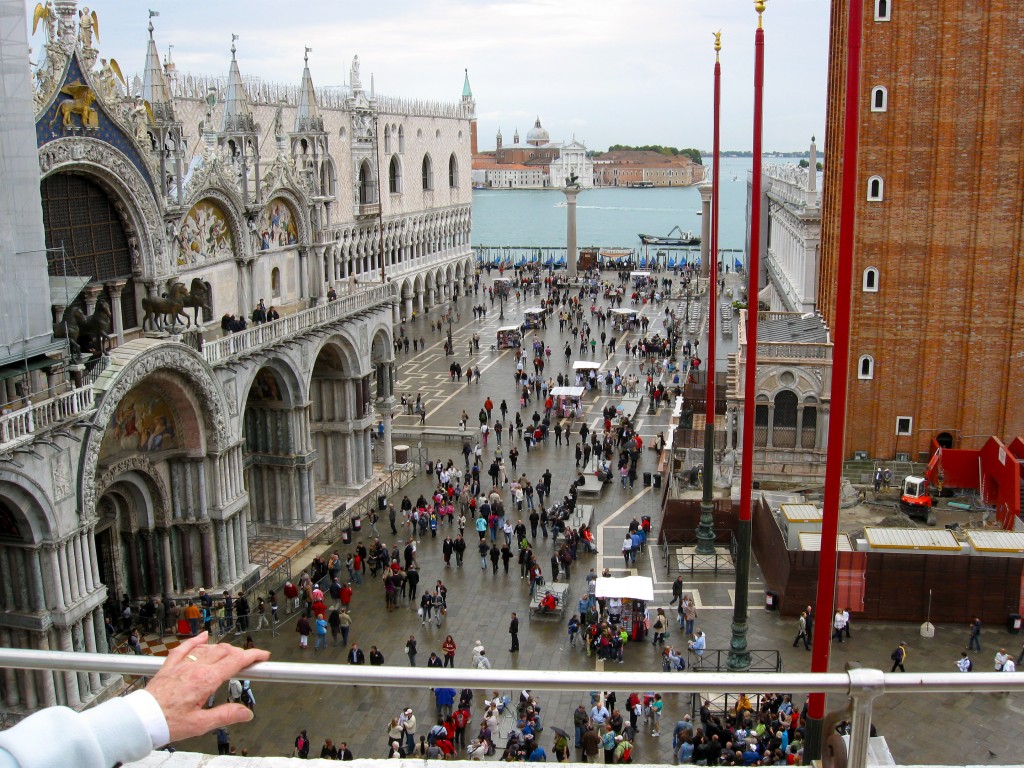
This is a view from the fourth level out over the square, past St. Mark's Basilica and the Bell Tower and over the lagoon. The two pillars near the water were used to hang people during executions, among other things.
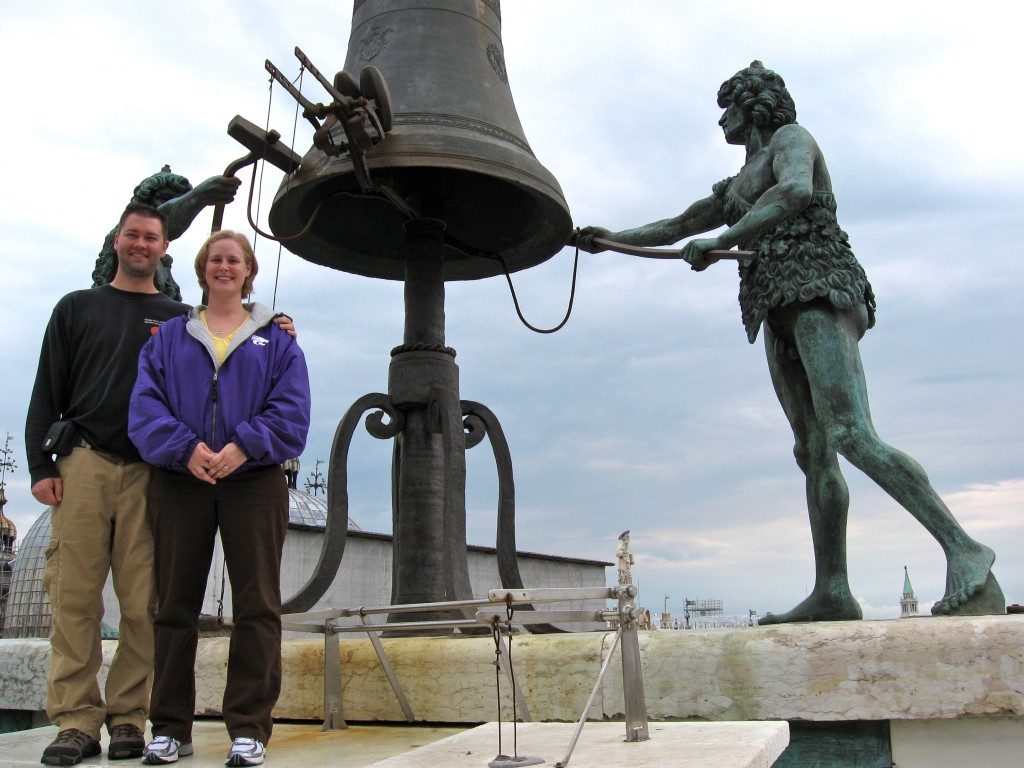
Our guide let us pass the rope line long enough to snap a shot of us in front of the bell and the moors.
Before I forget to mention it, the design and location of the clock tower were picked specifically to welcome the ships from the sea into Venice. The arch at the bottom of the tower opens into the main market street of Venice. This street is also a direct route to the Rialto Bridge and the rest of Venice.

